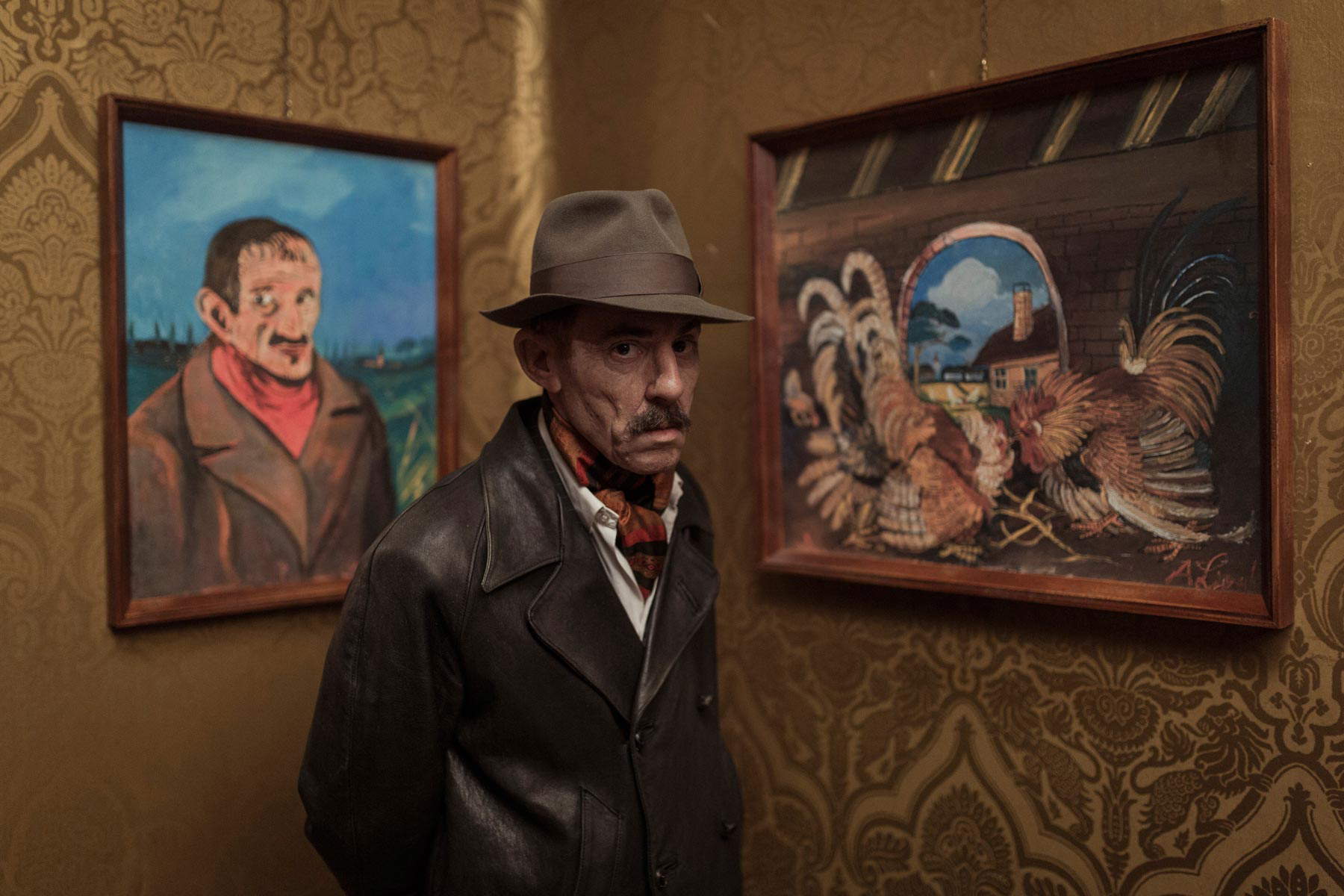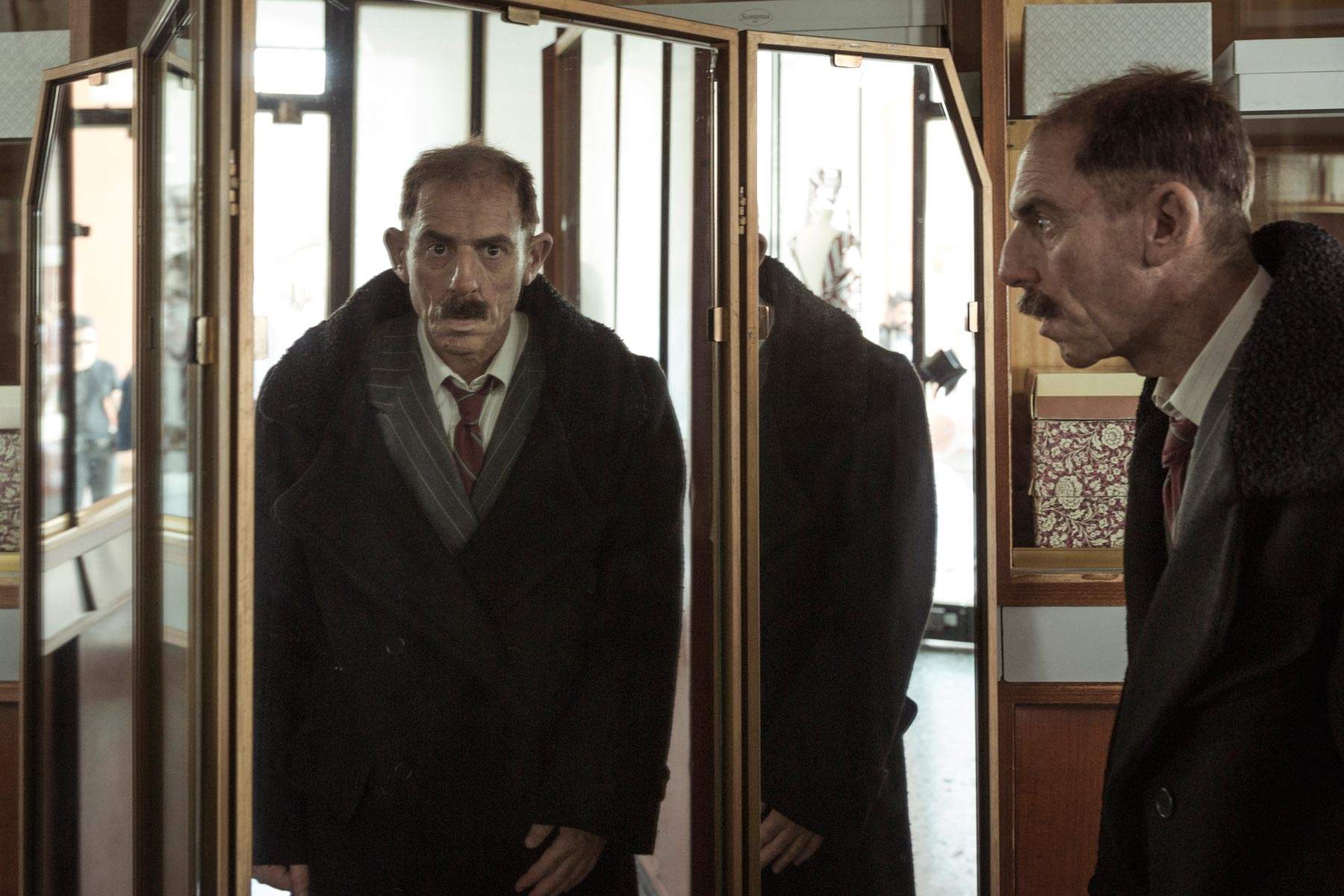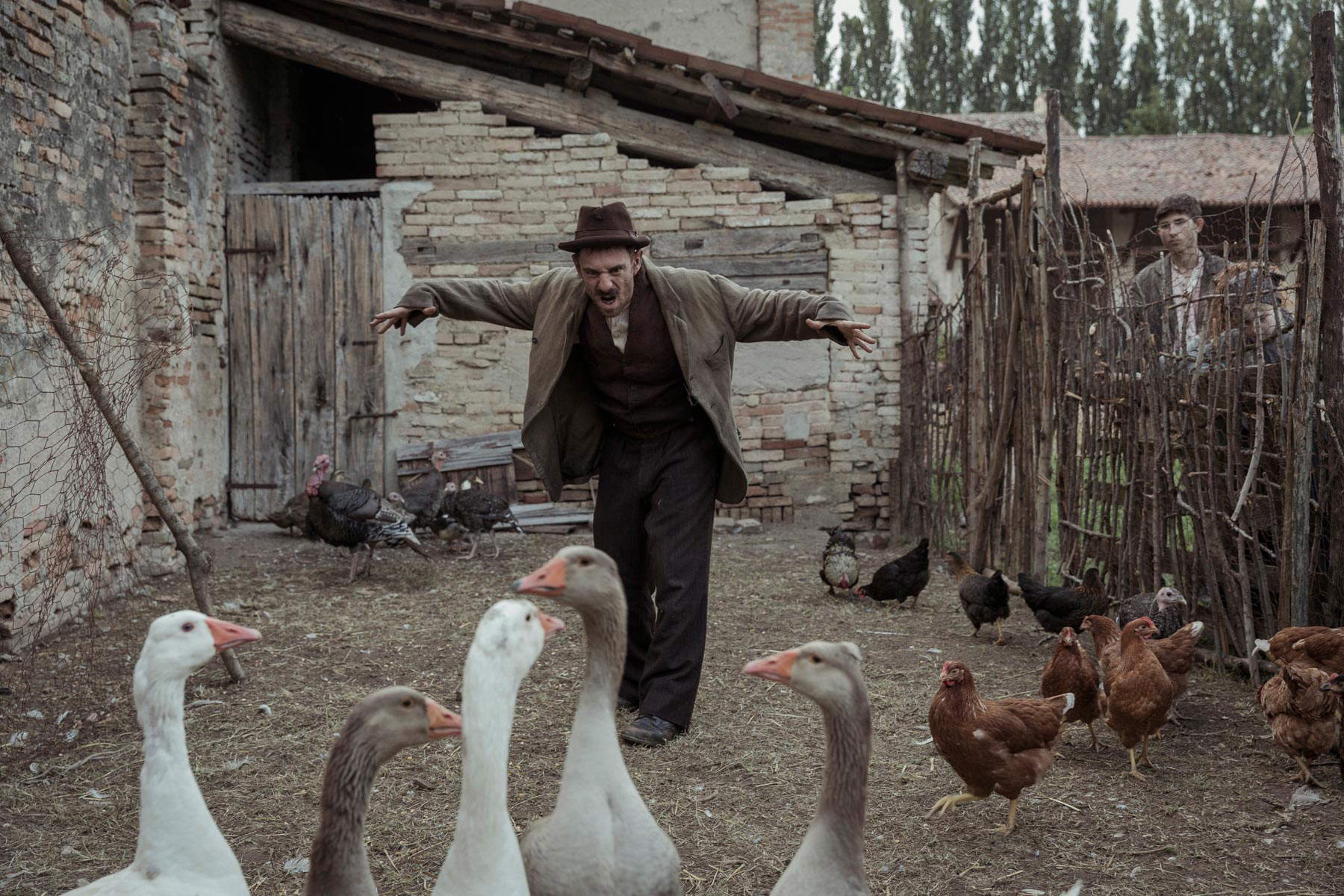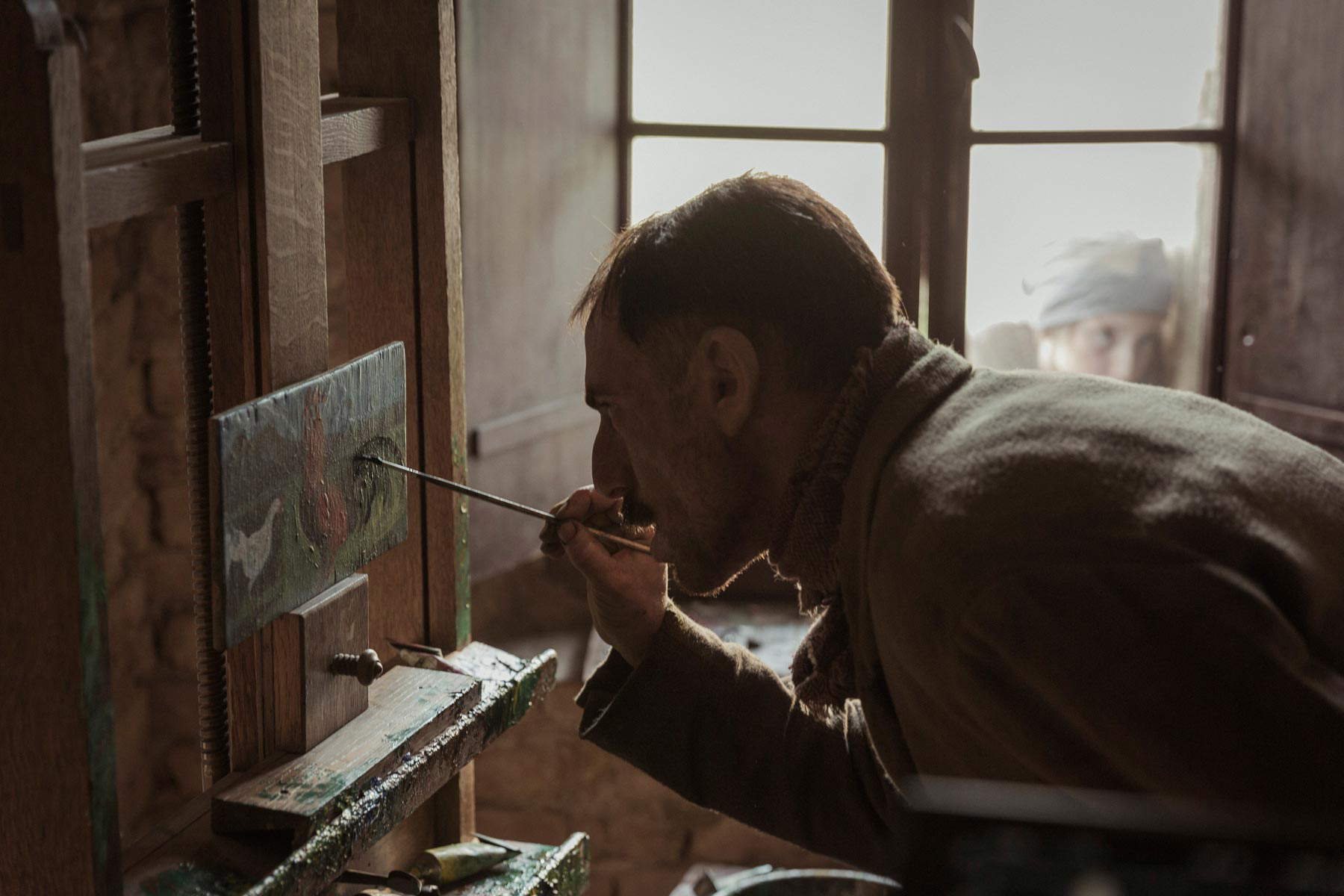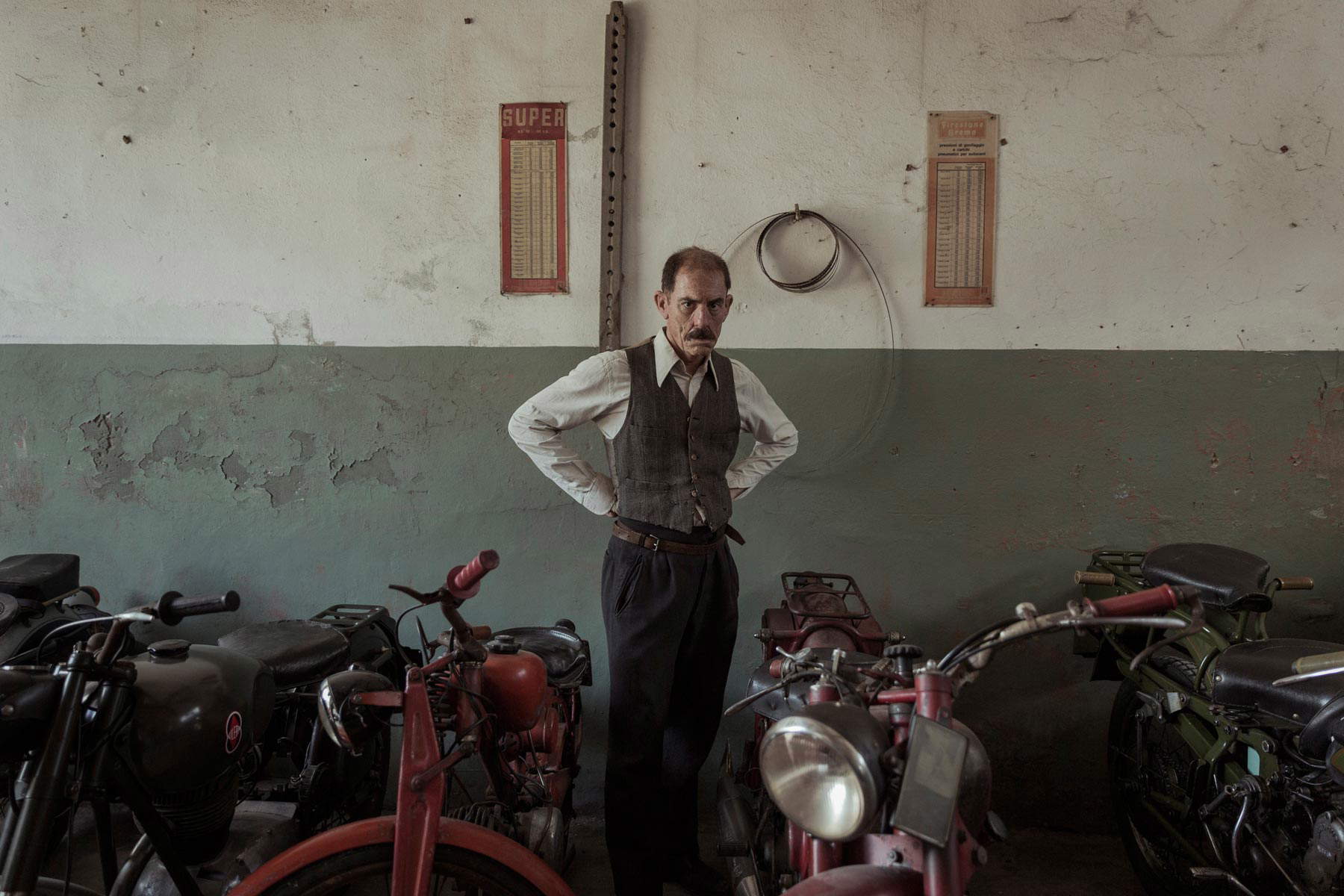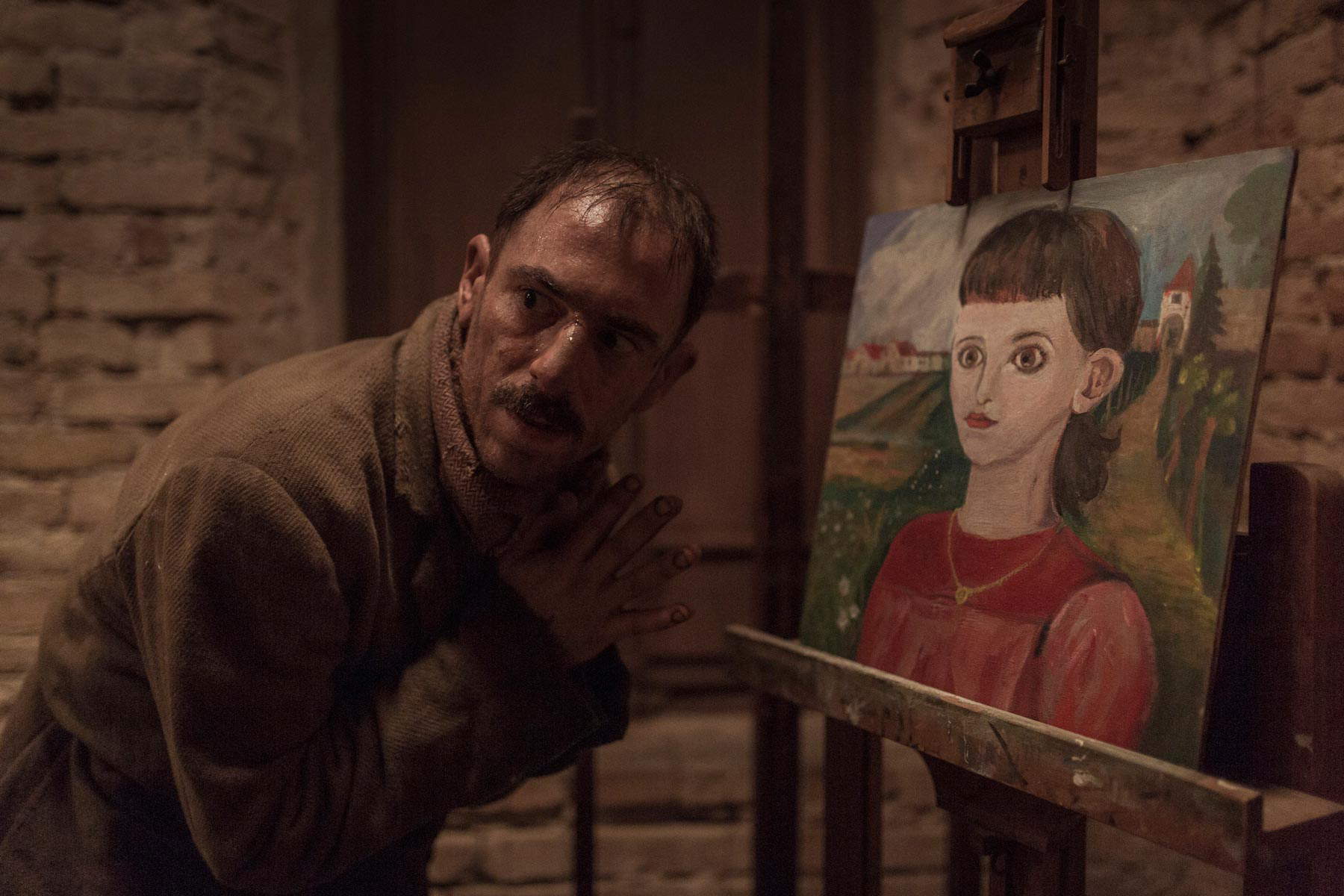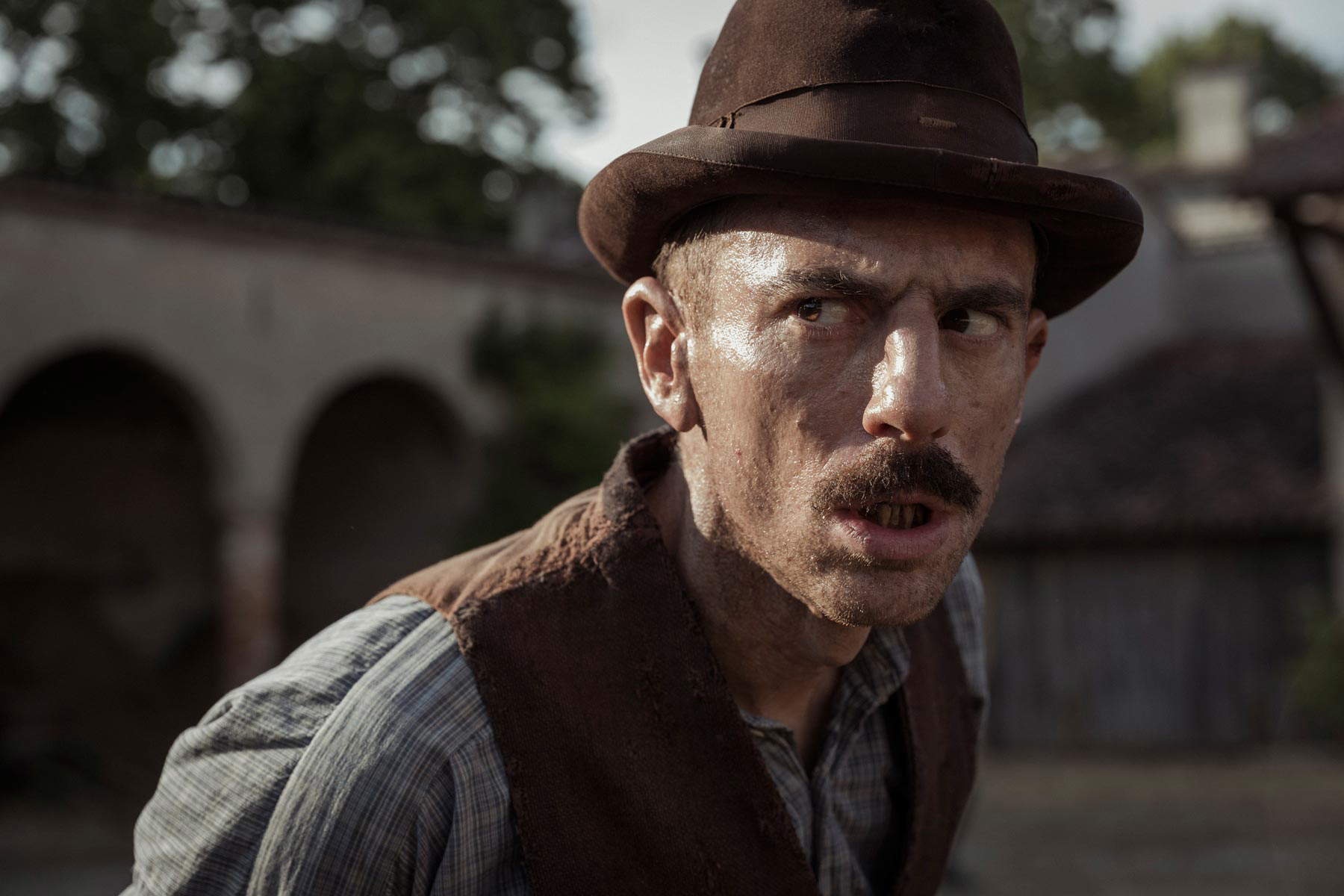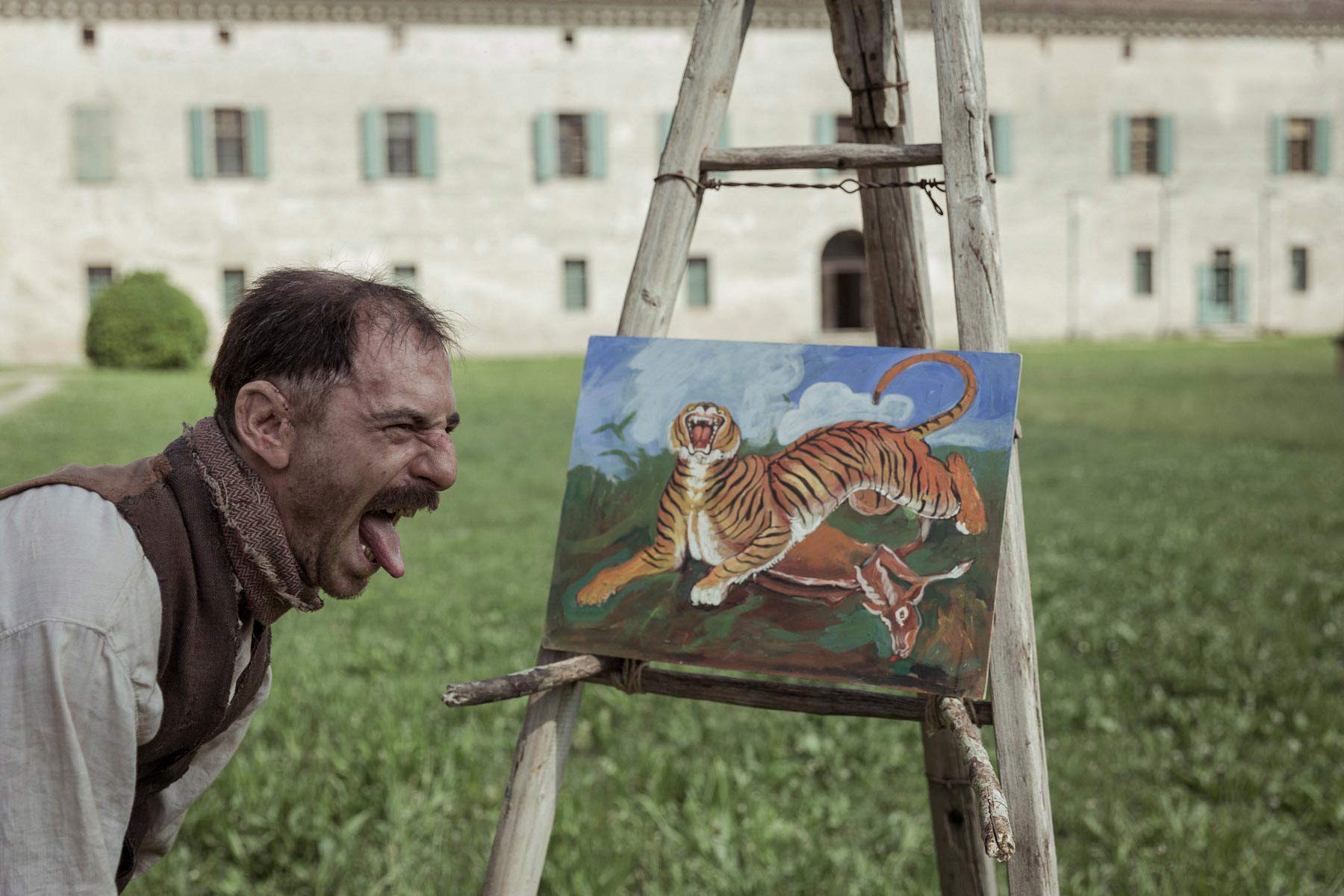by Gabriele Giannini , published on 08/09/2020
Categories: News Focus
/ Disclaimer
Review of the film "Volevo nascondermi," the film about the life of Antonio Ligabue starring Elio Germano as the great Emilian artist.
With the slow and gradual reopening of cinemas in Italy, Volevo nascondermi, the acclaimed biographical film by Giorgio Diritti in which Elio Germano plays the role of Antonio Ligabue (Zurich, 1899 - Gualtieri, 1965), makes its return to theaters. Initially scheduled for release at the end of February, the film returned to theaters in the second half of August, ready to introduce audiences to a better understanding of the troubled painter and sculptor who is Swiss by birth, Italian by nationality, and Emilian by adoption.
The film opens with a scene in which Antonio Ligabue is seen trying to hide from the sight of the psychiatrist. And in the first flashback we see him wanting to hide from his elementary school teacher. The artist wanted to hide from the mockery of the people around him, wanted to hide from the doctors who were trying to treat him. But he did not want to hide his love for animals and his talent in drawing, painting, sculpting. And Elio Germano certainly could not hide his skill in playing an artist as talented as he was tormented.
In Giorgio Diritti’s film, Germano entertains and enchants by magnificently stepping into the shoes of a troubled painter, long misunderstood, who will nevertheless win the esteem and admiration of so many people with his paintings and sculptures. A man with a tribulated life since his childhood, a man who lived among numerous difficulties, which he was able, however, to cope with by expressing himself through his works: and woe betide anyone who contradicted him or made fun of him, on pain of his unpredictable outbursts. He was a kind of animal lover, especially horses and rabbits, and between grunts and wild movements, he painted and sculpted beasts of all species: not only those he saw in the fields of the Po Valley and among the woods of his Emilia region or along the banks of his Po River, but also exotic animals, seen only in books, since Ligabue never had the chance to travel. And so between paintings depicting tigers, horses and even spiders, Ligabue comes into contact with the animals that surrounded him (and not only), including roosters engaged in a fight in the chicken coop, a clear reference to one of his most famous works, the Fight of the Roosters.
Giorgio Diritti, who also co-authored the screenplay, makes the viewer relive the most important stages of Ligabue’s life, from his difficult childhood with his adoptive parents to his arrival in Italy on the banks of the Po River, from his discovery by the sculptor Renato Marino Mazzacurati (Galliera, 1907 - Parma, 1969), to his successes in Rome, not forgetting his hospitalization in various psychiatric institutions both Italian and Swiss. The viewer thus witnesses the human and artistic growth of El Tudesc, as he was called by the villagers of Gualtieri, the town where he moved, a growth that would lead him to appreciate life and express himself through art. A growth made most evident in the cinematography: we move from the darkness of icy Switzerland to the light of comforting Italy, as if the film itself is illuminated by the sun as it rises, giving a feeling of well-being and discovery.
It is an authentic portrait of Ligabue that the film is able to offer, and this is not only because of a Germano perfectly cast in the part, but also because of the skill of the make-up artists and hairdressers who were able to transform the Roman actor into the perfect look-alike of the painter, to let Germano take care of the rest once he entered the set. All against the backdrop of the rural landscape of Emilia, which the director, a native of Bologna, knows very well, and which becomes a further protagonist of the film.
 |
| Frame from I wanted to hide |
 |
| Frame from I wanted to hide myself |
 |
| Frame from I wanted to hide myself |
 |
| Frame from I wanted to hide myself |
 |
| Frame from I wanted to hide myself |
 |
| Frame from I wanted to hide |
 |
| Frame from I wanted to hide |
 |
| Frame from I wanted to hide |
 |
| Frame from I wanted to hide |
 |
| Frame from I wanted to hide from me |
Warning: the translation into English of the original Italian article was created using automatic tools.
We undertake to review all articles, but we do not guarantee the total absence of inaccuracies in the translation due to the program. You can
find the original by clicking on the ITA button. If you find any mistake,please contact us.

